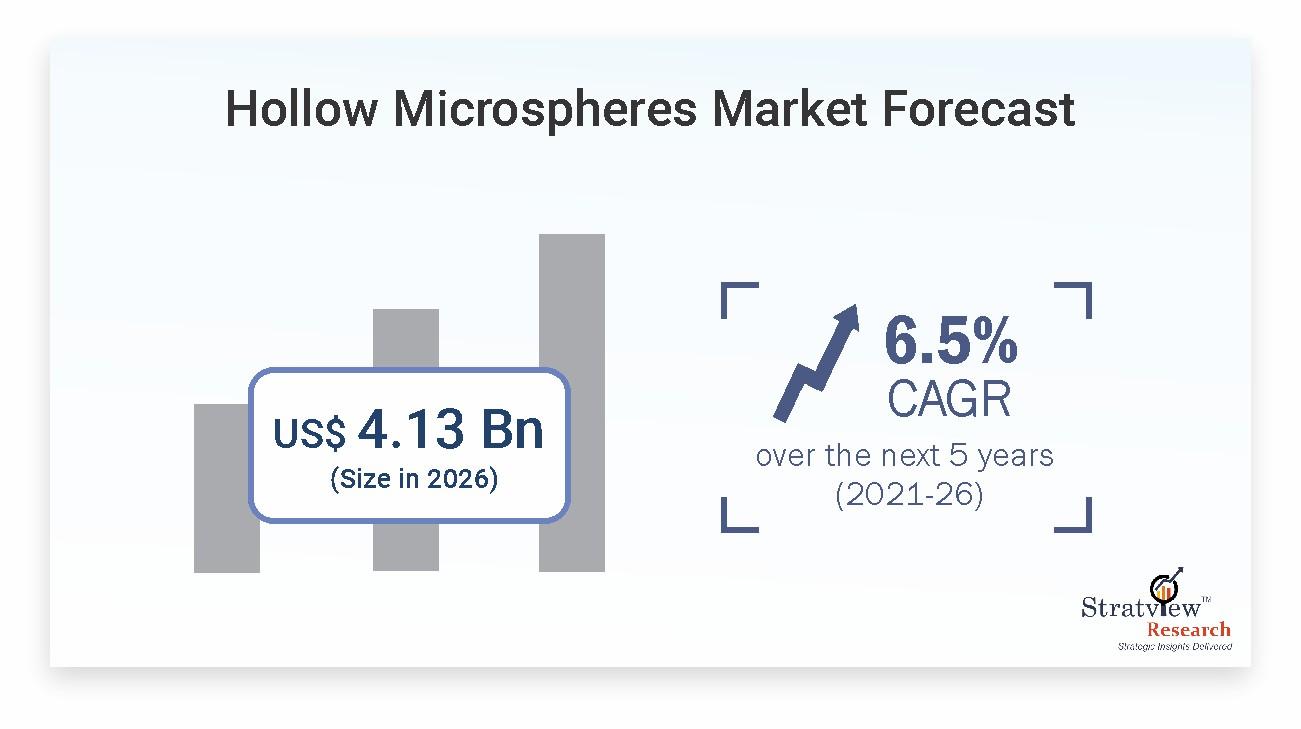Trends & Opportunities in the Hollow Microspheres Market

Tiny, hollow spheres—once niche fillers—have become critical in many modern materials. Known as hollow microspheres, these particles find use in applications where reducing weight, improving insulating performance, and enhancing material efficiency matter. Stratview Research estimates that the hollow microspheres market will grow from USD 2.75 billion in 2020 to USD 4.13 billion by 2026, achieving a CAGR of 6.5% over 2021-2026.
Request a Free Sample Report Here:
https://www.stratviewresearch.com/Request-Sample/828/hollow-microspheres-market.html#form
Drivers
- Emission reduction and fuel efficiency in transport: The automotive, aerospace and other transport sectors are under increasing pressure to reduce emissions. Lightweight materials are central to this effort. Hollow microspheres help by replacing heavier fillers and assisting in lowering overall component mass.
- Energy efficiency in buildings & construction: As governments and regulators push for more insulated, energy-efficient homes and buildings, material choices in construction matter. Hollow microspheres contribute to thermal insulation and reduce energy consumption (cooling/heating loads). Their use in lightweight cement slurries, wall panels, sealants etc., is rising.
- Stringent environmental & VOC regulations: Paints, coatings, and adhesives are subject to limits on volatile organic compounds. Hollow microspheres help by reducing binder/resin usage, enabling lower VOC formulations, and improving reflectivity or insulation in coatings.
- Lightweighting in plastics & rubber: For many plastic and rubber parts, using hollow microspheres allows significant reductions in specific density, improved performance, faster cycle times, and possibly lower costs per part.
Trends
- Material diversification: While hollow glass microspheres lead the market, expanded polymer microspheres are gaining traction due to lower weight and promising performance in certain applications. Other material types (cenospheres, perlite) serve niche or region-based demands.
- Focus on performance and process efficiency: Reducing energy use, lowering cycle times in production, improving uniformity of microsphere size and wall thickness are becoming competitive differentiators.
- Shifting regional demand: Europe remains the leader in current market size, but Asia-Pacific is forecast to have the fastest growth, led by industries in China, India. North America also remains a key region with strong R&D and manufacturing presence.
- Broadening application base: New applications are emerging beyond traditional ones. For example, insulation modules, buoyancy, deep-sea applications, specialized coatings, possibly more in aerospace, and high-performance composites.
Conclusion
The hollow microspheres market is clearly more than just a filler market—it is a materials innovation frontier. With strong drivers in lightweighting, environmental regulation, efficiency in production and material performance, the market is set for steady expansion (projected at ~6.5% CAGR to 2026). For companies in materials, plastics, coatings, construction, and automotive sectors, partnering with suppliers who can deliver consistent quality hollow microspheres, innovating in material types, and targeting high-growth regions such as Asia-Pacific will be the key to capturing value. As industries continue to push for sustainable, efficient, and high-performance materials, hollow microspheres are poised to play a growing role in the solutions of tomorrow.
- Art
- Causes
- Crafts
- Dance
- Drinks
- Film
- Fitness
- Food
- Jogos
- Gardening
- Health
- Início
- Literature
- Music
- Networking
- Outro
- Party
- Religion
- Shopping
- Sports
- Theater
- Wellness




